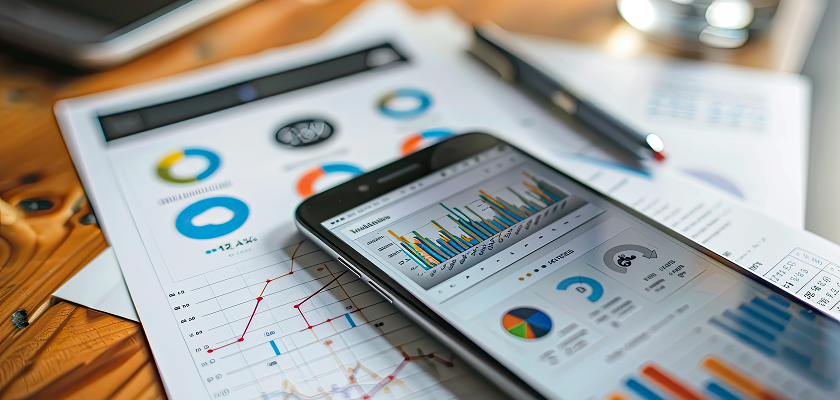
Obtaining the Social Media Data That Influencer Agencies Need
Obtaining the Social Media Data That Influencer Agencies Need https://www.simplifiedb2b.com/wp-content/uploads/2025/02/obtaining-the-social-media-data-that-influencer-agencies-need.png 840 400 sb2b sb2b https://secure.gravatar.com/avatar/6bb979ecce4d0973f1570b4151ce9587?s=96&d=mm&r=g- sb2b
- no comments
Demand for influencer marketing services is skyrocketing, with brands doubling down on this strategy across industries. According to Influencer Marketing Hub, the impact of influencer marketing has led social media to overtake paid search as the largest global advertising channel. With over 80% of marketers finding it effective and US influencer marketing spending projected to grow by 14.2% in 2025, there’s no sign of this momentum slowing down.
As a result, brands are increasingly turning to influencer agencies to find creators who align with their goals and deliver measurable campaign success. However, as influencer marketing matures and investment grows, the demand for hard data to prove ROI and enhance scalability is also rising.
For agencies like SimplifiedB2B, data has become a critical resource for forging high-quality matches between brands and influencers. In this highly competitive landscape, agencies must leverage accurate and up-to-date data to drive strategic decisions and measurable results.
The Role of Web Data in Influencer Marketing
To stay ahead, agencies are investing in web scraping technologies to ensure their data remains fresh and reliable. As Golan Manor, CTO at NinjaInfluence, explains in a Bright Data case study, “We gather publicly available web data to discover new influencers, match our customers with the right ones in their category, track campaigns in real time, and provide brands with actionable insights.”
Without access to publicly available web data, these processes would be manual and nearly impossible to scale. Ensuring database accuracy is essential for making informed marketing decisions.
Key Data Metrics That Drive Influencer Marketing Success
1. Creator Engagement Metrics
Agencies need precise engagement data to assess an influencer’s true impact. Fake followers and inflated engagement rates make it challenging to distinguish between genuine audience reach and artificially boosted metrics.
- Likes, comments, shares, and reactions provide surface-level insights.
- Deeper analytics can reveal true engagement levels, including how actively audiences interact with the content.
2. Creator Audience Metrics
The success of a campaign hinges on how well an influencer’s audience matches a brand’s target demographic. To achieve this, agencies must analyze:
- Demographics (age, gender, location, career, income level)
- Psychographics (interests, values, behaviors)
While platform analytics provide limited data, cross-referencing social media profiles and unstructured keyword data from the open web often offer richer insights. Platforms like Modash specialize in consolidating these audience insights.
3. Compliance Metrics
Navigating legal and ethical regulations is crucial in influencer marketing. Agencies must ensure that creators comply with:
✔ Sponsored content disclosure laws
✔ Industry-specific guidelines (e.g., alcohol advertising, health product disclaimers)
✔ Platform-specific terms of service
Keeping up with content across multiple platforms is challenging, especially for video and live-streamed content. AI-powered tools can help agencies automate compliance checks and mitigate risk.
4. Content Performance Metrics
Understanding which content types drive engagement is essential. Agencies need insights into:
📌 Posting Frequency
📌 Content formats (videos, reels, carousels, long-form posts)
📌 Sponsored vs. organic content ratios
Many analytics tools, including Google Analytics and API data, help track these metrics, but ephemeral content (like Instagram Stories and TikTok videos) adds an extra challenge. Real-time tracking solutions can help agencies capture disappearing content and measure its impact.
5. Real-Time Campaign Performance Metrics
To optimize campaigns in real time, agencies need access to live performance data, including:
📊 Impressions
📊 Click-through rates (CTR)
📊 Conversions and ROI
Nycole Hampton, an integrated marketing strategist, emphasizes the importance of monitoring performance throughout the campaign, not just at the end. If a creator’s content is performing exceptionally well, brands can allocate additional budget to maximize impact.
Data Powers the Future of Influencer Marketing
Gone are the days when agencies could rely on intuition and guesswork. Today, data is the backbone of influencer marketing success, allowing brands to:
✅ Make informed decisions
✅ Optimize campaign strategies in real time
✅ Stand out in an increasingly competitive space
At SimplifiedB2B, we recognize the power of data-driven influencer marketing and continue to prioritize accurate, up-to-date insights that drive measurable results. By leveraging the right technology and analytics, agencies can ensure long-term success for brands and influencers alike.
- Posted In:
- Uncategorized

Leave a Reply